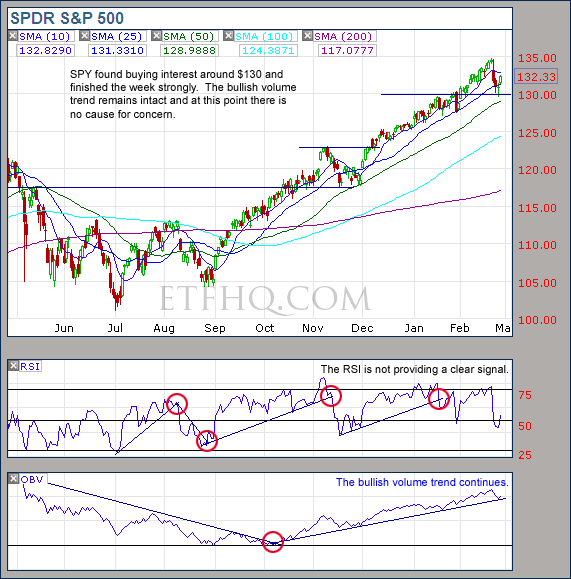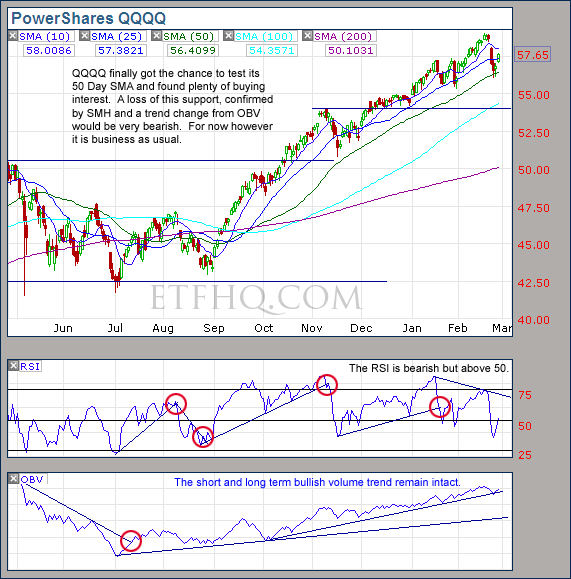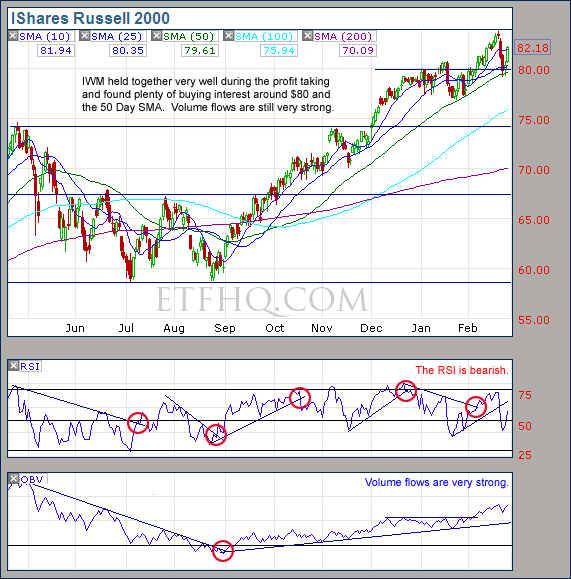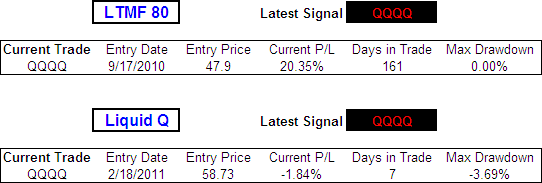February 28, 2011 – 08:35 am EST
Another week comes to an end and it was an exciting one for all the wrong reasons. The stock market saw some sharp declines but even more alarmingly the New Zealand Town of Christchurch suffered a devastating earthquake. Thanks to everyone who emailed to ask if we were OK – Luckily for us the quake was down the other end of the country.
The death toll currently sits at 148 but is expected to rise significantly as more bodies are found. Even these amazing photos just don’t do justice to the scale of the devastation. Please take the time to read this article to get a true understanding of what it was like – The Day The Earth Roared, and then go here to help us Kiwis out – http://www.redcross.org.nz/donate. Thank you so much!
To the markets – On Tuesday we saw sharp declines that apparently come out of nowhere, however this is typical behavior from a mature rally. Thankfully support was quickly found and Friday saw many buyers return. The skill at times like this is in being able to separate the whipsaws from the reversals, lets take a closer look…
** New Post – The Variable Moving Average (VMA) aka Volatility Index Dynamic Ave (VIDYA)
**** Welcome to all our new readers this week. We grow by word of mouth so thanks for spreading the word!
.
ETF % Change Comparison
.

Closest to their highs and also the best performers over the last week were IWM and SMH. These are two highly economically sensitive ETFs – If we had just seen a major market reversal then it is most unlikely that these two would be showing such strong relative strength. However the under performance of the Transports (IYT) is not good and it will be important that they don’t get left behind.
.
Learn more – ETF % Change Comparison
.
![]()
.
A Look at the Charts
.

A bit of selling is healthy and for now there are no warning signs from SPY.
.

QQQQs 50 Day SMA support held strong, keep an eye on this level.
.

Volume from the Semis is lacking but the price action still looks strong.
.

Great volume from the Small Caps (IWM) – we remain in a bull market while that trend is intact.
.

IYT must hold together if the rally on the broad market is to continue. Look out below $90.
.
![]()
.
OM3 Weekly Indicator
.

The transports have achieved the first sell signal in almost 6 months. Bear alerts across the board warn that the weekly cycle is slowing.
Learn more – The OM3 Indicator
.
![]()
.
TransDow & NasDow
.

NasDow – The Dow has been dominant over the NASDAQ for 77 days now. During this time the Dow has advanced 6.31% and the NASDAQ has advanced 5.44%.
TransDow – The Dow has been dominant over the Transports for 34 days. During this time the Dow has advanced 2.18% and the Transports have advanced 0.29%.
Historically when the Dow has been the dominant index the market has been very unproductive.
.
What the TransDow Readings tell us:
The TransDow measures dominance between the DJ Transportation Index (DJTI) and the Dow Jones Industrial Average (DJIA). In a strong market the more economically sensitive Transportation Index should be dominant over the DJIA.
Historically the DJTI has been dominant over the Dow 45% of the time. The annualized rate of return from the DJTI during this period was 18.47% with the biggest loss for one trade sitting at -13.27%. The annualized return from the DJIA during the periods it was dominant over the DJTI was just 4.06% and the biggest loss for one trade was -16.13%. A 4% stop-loss is applied to all trades adjusting positions only at the end of the week.
What the NasDow Readings tell us:
The NasDow measures dominance between the NASDAQ and the DJIA. Using the same theory behind the Trans Dow; in a strong market the more economically sensitive NASDAQ should be dominant over the DJIA.
Historically the NASDAQ has been dominant over the DJIA 44% of the time. Taking only the trades when the NASDAQ is above its 40 week moving average the annualized rate of return was 25.47% with the biggest loss for one trade sitting at –8.59%. The annualized rate on the DJIA during the periods it was dominant over the NASDAQ is just 8.88% and the biggest loss for one trade was –12.28%. A 8% stop-loss is applied to all trades adjusting positions only at the end of the week.
.
![]()
.
LTMF 80 & Liquid Q
.

LTMF 80 continues to hold a position in QQQQ after 161 days and currently shows a profit of 20.35%.
The Liquid Q trade has gotten off to a bad start and currently shows a loss of 1.84% after 7 days.
.
Historical Stats:
.

.
How The LTMF 80 Works
LTMF stands for Long Term Market Forecaster. It reads volume flows relative to price action and looks for out performance of volume measured on a percentage basis over the prior 12 months. During a sustained rally the readings will reach high levels (near 100%) making it imposable for the volume reading to always outperform price so any reading above 80% will maintain the buy signal. This system has outperformed the market over the last 10 years but performance has been damaged by some nasty losses. It only produces buy signals and only for QQQQ.
How Liquid Q Works
Liquid Q completely ignores price action and instead measures the relative flow of money between a selection of economically sensitive and comparatively stable ares of the market. It looks for times when the smart money is confident and and can be seen by through volume investing heavily is more risky areas due to an expectation of expansion. This system has outperformed the market over the last 10 years and remained in cash through most of the major declines. It only produces buy signals and only for QQQQ. We will provide more performance details on the web site for these systems soon.
.
![]()
.
Summary
We have seen a little bit of light selling and a number of support levels have been tested but there is little cause for concern so far. The strongest bearish arguments comes from the lack luster performance of IYT and the lack of volume behind SMH. However IWM and SMH continue to show relative strength and their volume trends do remain bullish.
If IYT closes below $90 and its 100 Day SMA then expect more selling from the broad market. Keep an eye on the 50 Day SMAs – they have generated buying interest so far and will hopefully continue to do so.
Any disputes, questions, queries, comments or theories are most welcome in the comments section below.
.
Cheers
Derry
And the Team @ ETF HQ
“Equipping you to win on Wall St so that you can reach your financial goals.”
.
![]()
.
Quote of the Day:
“Do not regret growing older. It is a privilege denied to many.” – Author Unknown